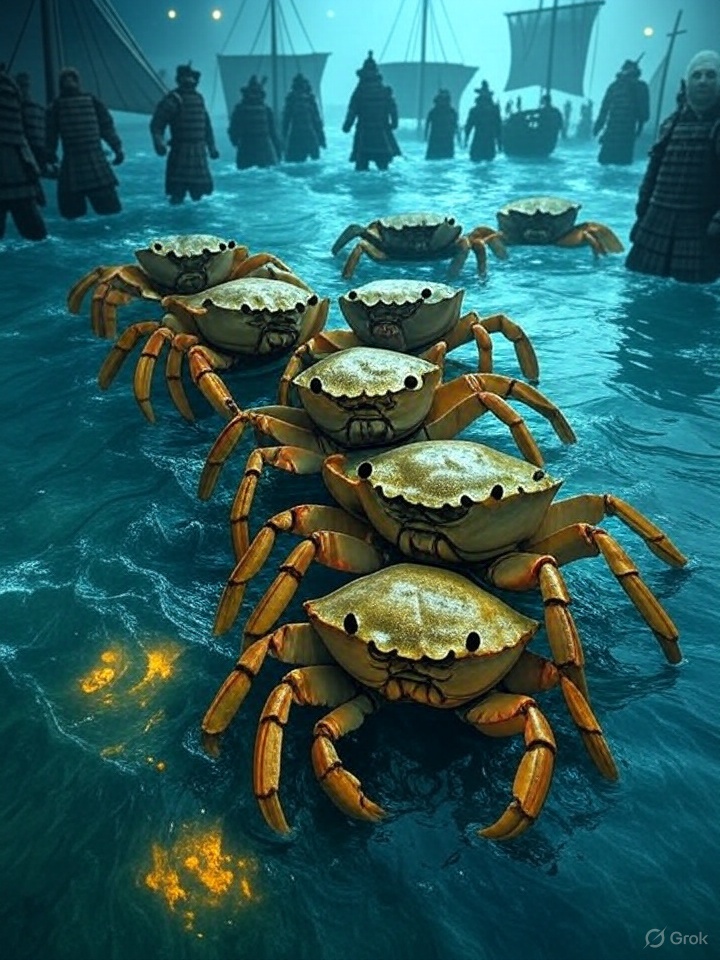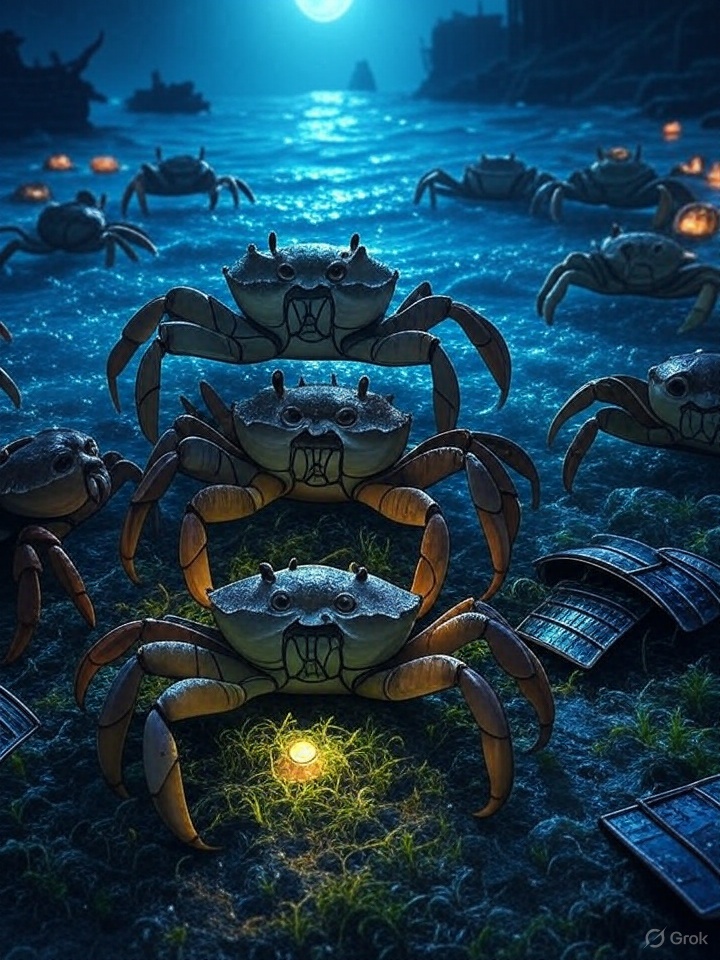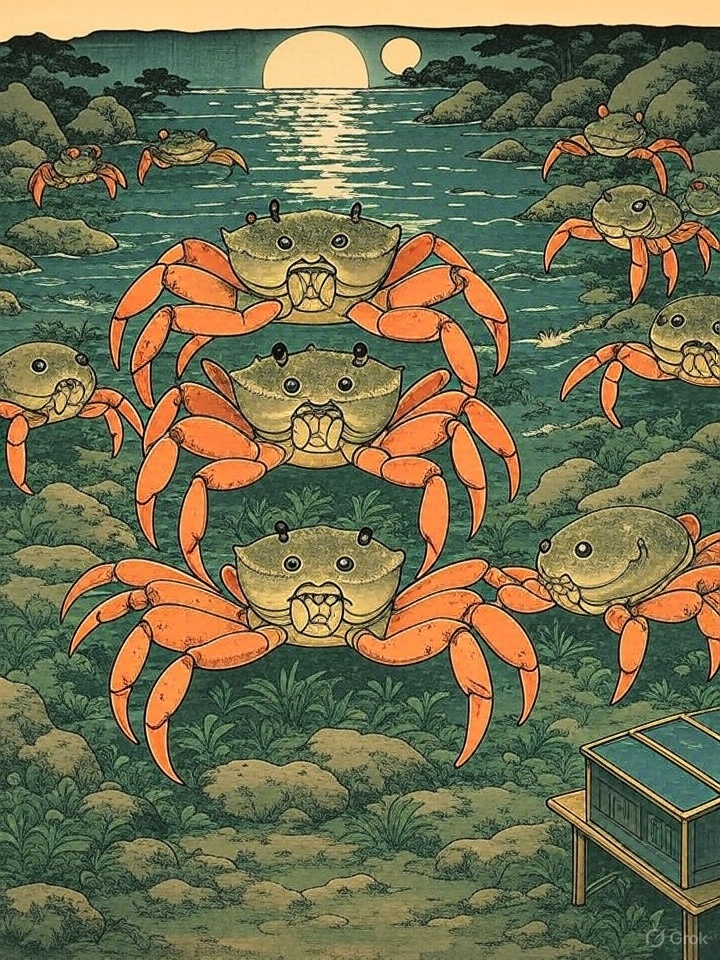Name Meaning
Heikegani (平家蟹) translates to “Heike crab,” named after the defeated Heike (Taira) clan. These crabs are said to carry the angry spirits of samurai lost in battle.
Origin
- Linked to the Battle of Dan-no-ura (1185), a historic naval clash between the Heike and Genji clans.
- The crabs are found in the Inland Sea of Japan, particularly near Shimonoseki.
- Folklore says their faces resemble the samurai who died in that battle.
Appearance
- Small crabs with a shell that resembles a snarling human face.
- Often interpreted as angry or pained expressions.
- Natural shell ridges accentuate the illusion of facial features.
Behavior & Myths
- Feared and respected, often left untouched by fishermen out of reverence.
- Believed to be reincarnations of disgraced spirits still wandering the sea.
- Some legends claim their appearance is divine punishment or sacred transformation.
Symbolism
- Represents fallen pride, tragedy, and vengeance.
- A reminder of the power of memory and history in shaping nature’s myths.
- Featured in literature, samurai stories, and marine folklore exhibits.



